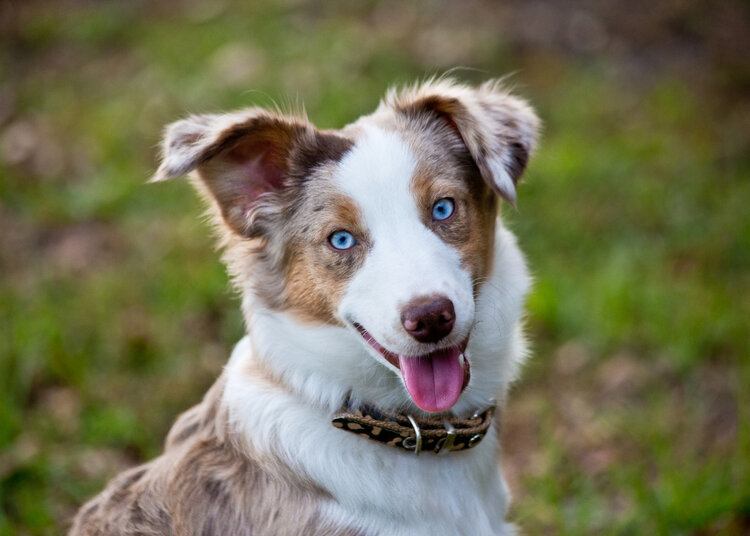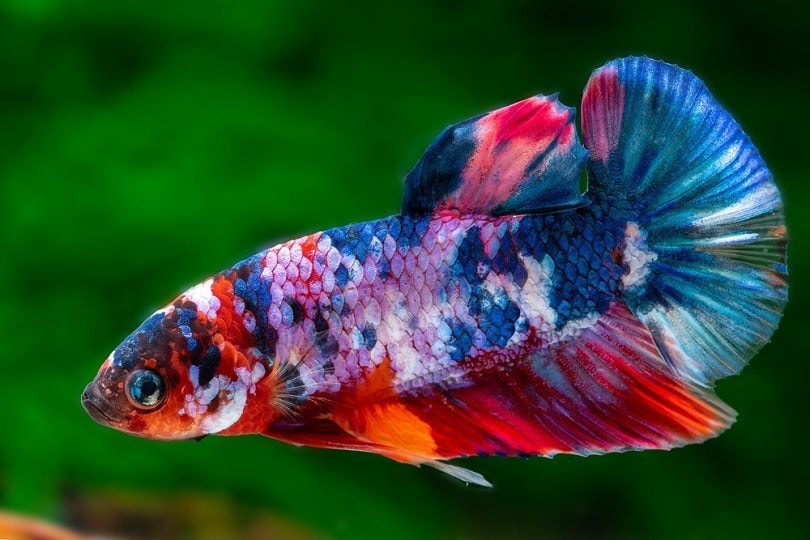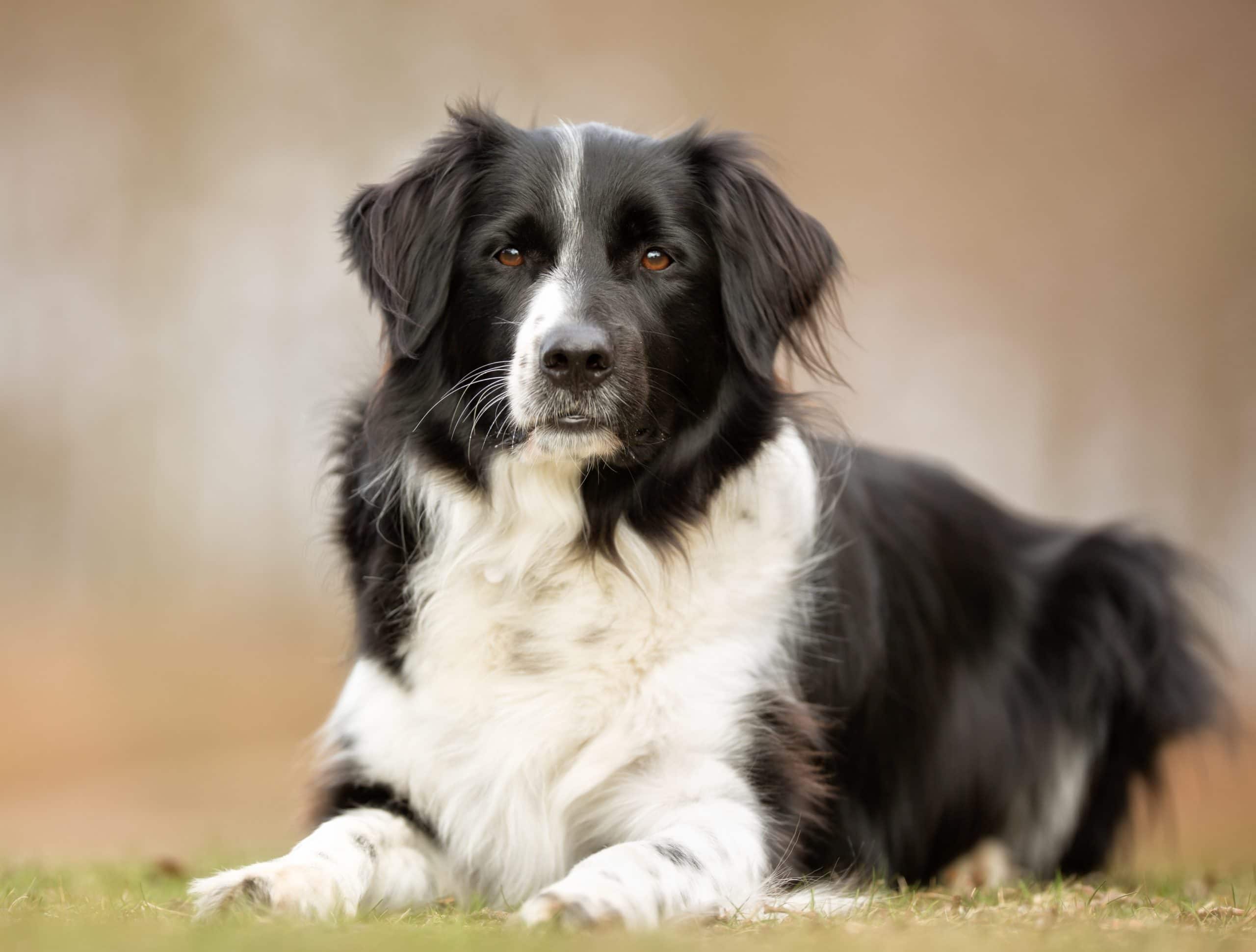VET APPROVED

The information is current and up-to-date in accordance with the latest veterinarian research.
Learn more »While there are quite a few dog breeds out there that can have blue eyes on rare occasions, there are only a few dog breeds that can consistently have blue eyes. That doesn’t mean that these breeds always have blue eyes, but it does mean that it’s not completely unheard of or incredibly rare for any of these breeds to have those sparkling blues.

The 10 Dog Breeds With Blue Eyes
1. Siberian Husky
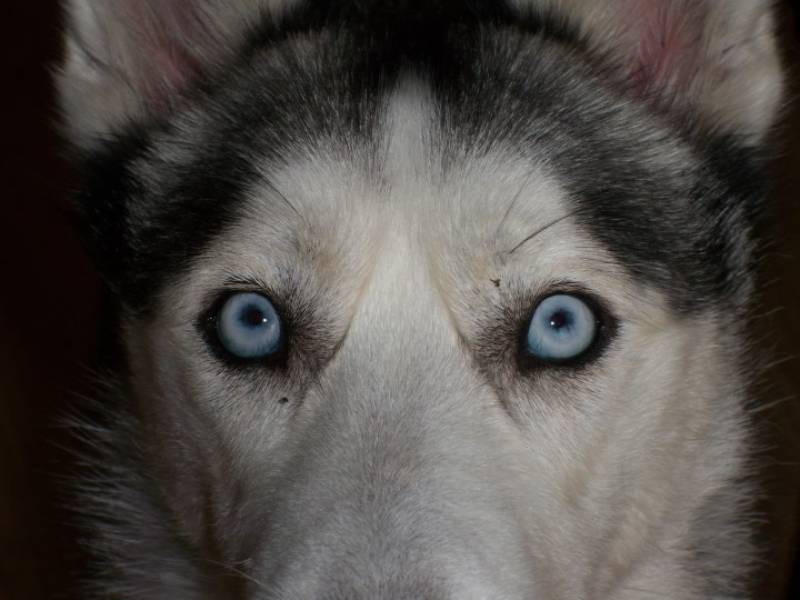
| Origin: | Siberia |
| Lifespan: | 12 to 15 years |
| Height: | 20 to 24 inches |
The Siberian Husky is the dog most associated with blue eyes, but did you know that not every Siberian Husky has blue eyes? They can also have brown and sometimes even have green eyes, although this is rare.
But no matter their eye color, the Siberian Husky is a great family dog with endless energy. Also, keep in mind they have a stubborn streak that you’ll need to conquer to train them properly.
2. Cardigan Welsh Corgi
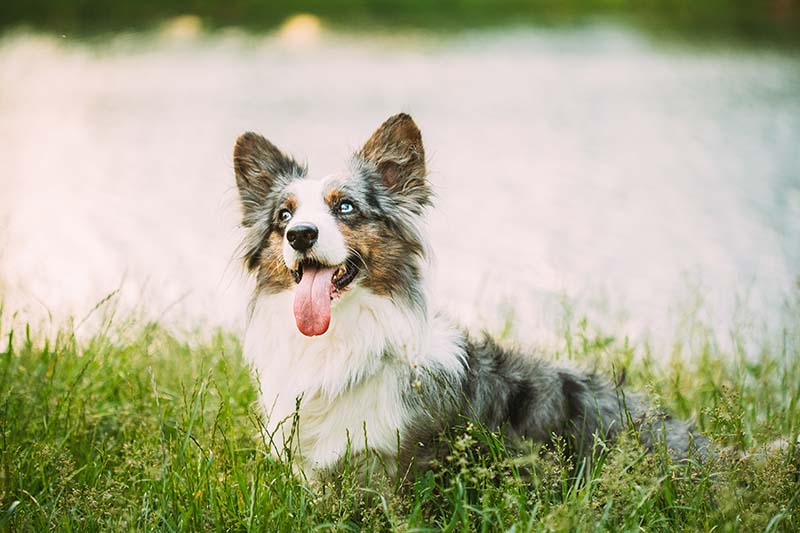
| Origin: | Cardigan in Ceredigion, Wales, U.K. |
| Lifespan: | 12 to 15 years |
| Height: | 10.5 to 12.5 inches |
The Cardigan Welsh Corgi is a smaller dog, but that doesn’t mean they’re the easiest breed to own. They’re not always the best with kids, and they need a little extra socialization around other dogs. However, by breed standards, only the blue merle Welsh Corgi has blue eyes.
The Welsh Corgi is a higher-energy dog, but because of their smaller size, it’s a little easier to meet their exercise needs than it is with larger breeds.
3. Weimaraner

| Origin: | Germany |
| Lifespan: | 11 to 14 years |
| Height: | 23 to 26 inches |
Every Weimaraner has blue eyes when they’re born, but most Weimaraners will have those blue eyes turn to gray or amber as they age. They’re ideal family dogs, but just keep in mind that they’ll need a little extra socialization if you plan to keep them around other pets.
They’re extremely smart, but they also have a lot of energy, so unless you have the space for them, they’re not always the best choice for everyone, no matter the color of their eyes!
4. Australian Shepherd
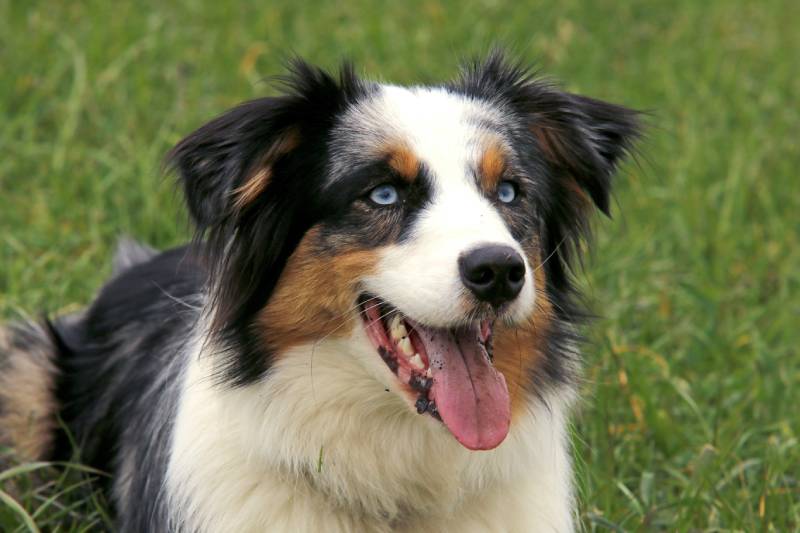
| Origin: | U.S. |
| Lifespan: | 13 to 15 years |
| Height: | 18 to 23 inches |
Australian Shepherds’ eyes can be blue, amber, brown, or any variation or combination thereof, so it’s a bit of an unknown what color eyes your Australian Shepherd might have. They’re good with kids but don’t always get along the best with other dogs in the house.
They’re also extremely high-energy and eager to please, making them easier to train than many other dog breeds. They’re really ideal to have if you need a working dog.
5. Pomsky

| Origin: | United States |
| Lifespan: | 12 to 15 years |
| Height: | 10 to 15 inches |
While the Pomsky doesn’t enjoy American Kennel Club (AKC) recognition, they’re still highly sought-after in the United States. They can have two different eye colors—blue eyes or brown eyes—but no matter what, they’re beautiful and affectionate pets.
6. Shetland Sheepdog
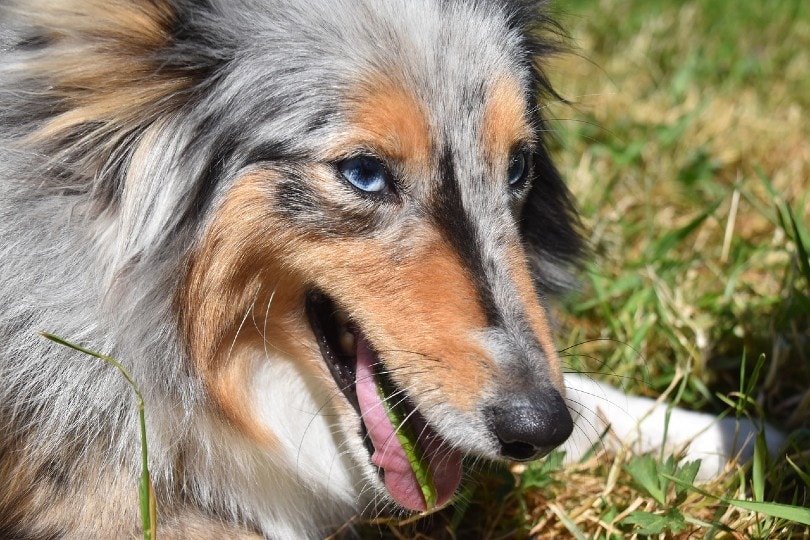
| Origin: | Scotland |
| Lifespan: | 12 to 13 years |
| Height: | 13 to 16 inches |
Not every Shetland Sheepdog has blue eyes, but they also have plenty of other eye colors, and blue is one of the rarer options. But whether your Shetland Sheepdog has blue eyes or a different color, they’re excellent family dogs.
Shelties are also smart and eager to please. They are one of the more vocal dog breeds out there, so they’re not always the best choice if you live in close quarters with other people.
7. Border Collie

| Origin: | Scotland |
| Lifespan: | 10 to 17 years |
| Height: | 18 to 22 inches |
Border Collies can have different shades of brown or blue eyes, and if you have a merle-coated Border Collie, it’s more likely for them to have blue eyes. Just know that the Border Collie isn’t always the best for smaller pets and kids because of their herding instincts.
They are eager to please and highly intelligent, but they’re also extremely high energy and need plenty of space to run around; otherwise, it can lead to all sorts of behavioral problems.
8. Great Dane

| Origin: | Germany |
| Lifespan: | 8 to 10 years |
| Height: | 28 to 35 inches |
The Great Dane is the largest dog on our list by far. Most Great Danes have dark eyes, but in merle and harlequin Great Danes, blue eyes and eyes of different colors are permitted.
They have shorter lifespans, though, and because of their larger size, they’re not always the best for smaller kids and pets.
9. Alaskan Klee Kai
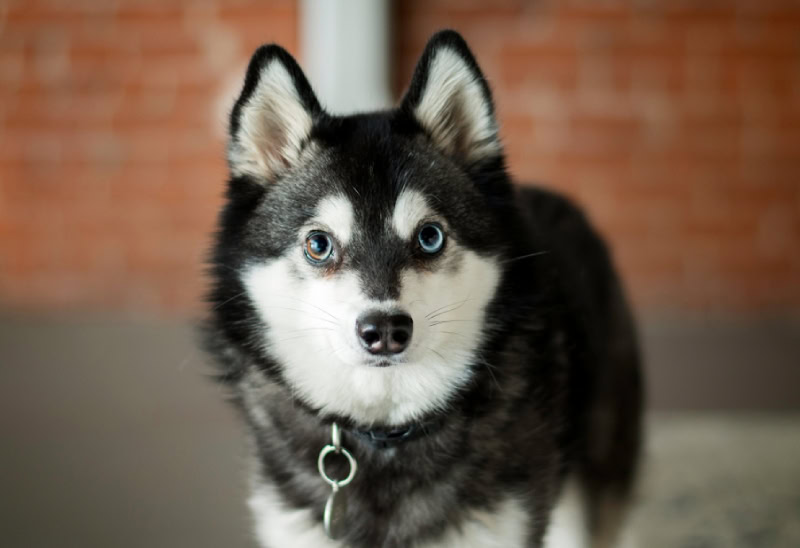
| Origin: | Alaska |
| Lifespan: | 12 to 16 years |
| Height: | 15 to 17.5 inches |
Not every Alaskan Klee Kai has blue eyes, but it is one of the most common eye colors for them, right up there with brown. The Alaskan Klee Kai is great with other dogs, but they’re not always the best with young children.
This breed is also super stubborn, but they’re not always the most vocal, and compared to many of the other dogs on our list, they don’t have the most energy.
10. Old English Sheepdog

| Origin: | Britain |
| Lifespan: | 10 to 12 years |
| Height: | 20 to 24 inches |
The Old English Sheepdog usually has dark brown eyes, but blue eyes are also possible. They are incredibly loving and affectionate, although they do need a little extra socialization from a young age. They’re eager to please too, and because they only have moderate energy levels, it can be a bit easier to meet those needs.

Conclusion
While all the dogs on our list can have blue eyes, that doesn’t mean every one will always have blue eyes. In fact, most of the time, the dogs on our list will have an eye color other than blue, but it’s possible for them to carry the trait or to have blue eyes themselves. Just keep in mind that no matter their eye color, they’re all great dogs that need a loving home like yours.
Featured Image Credit: eather Skau, Shutterstock
